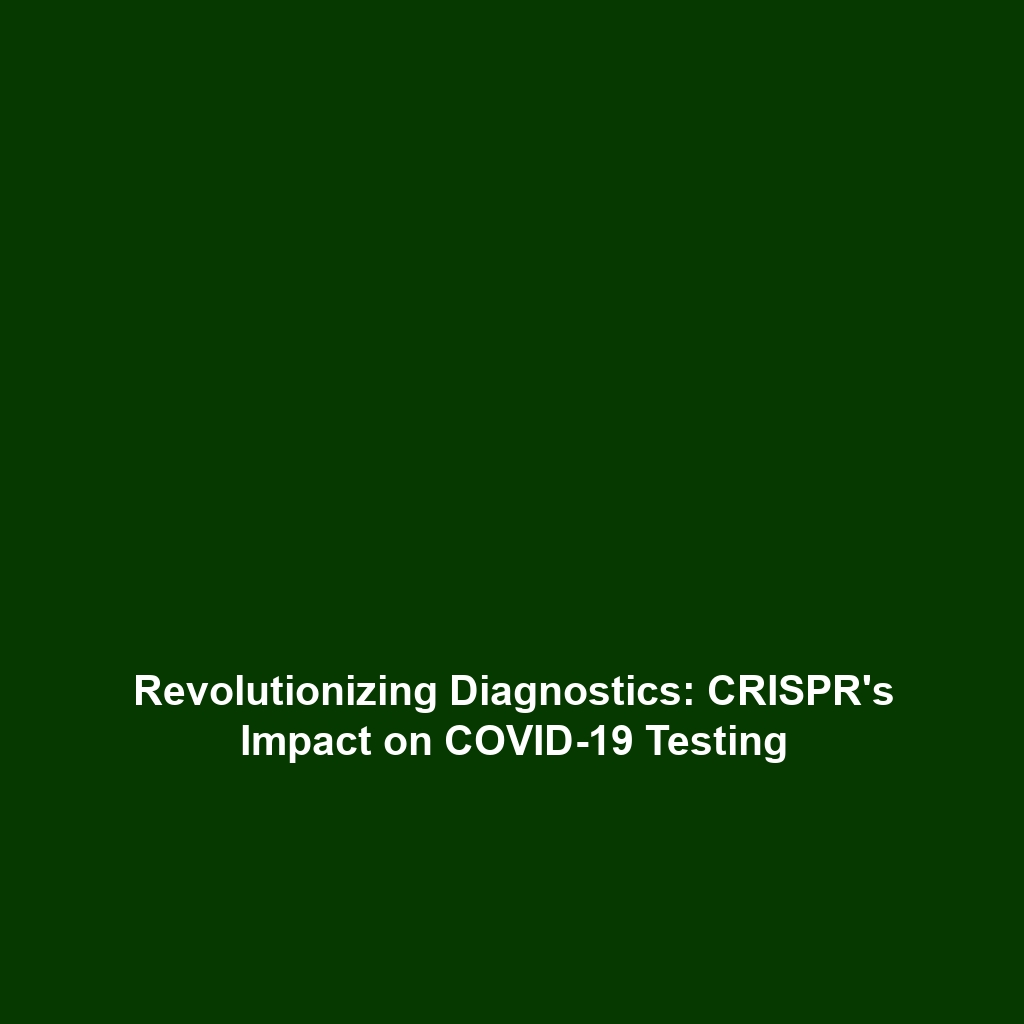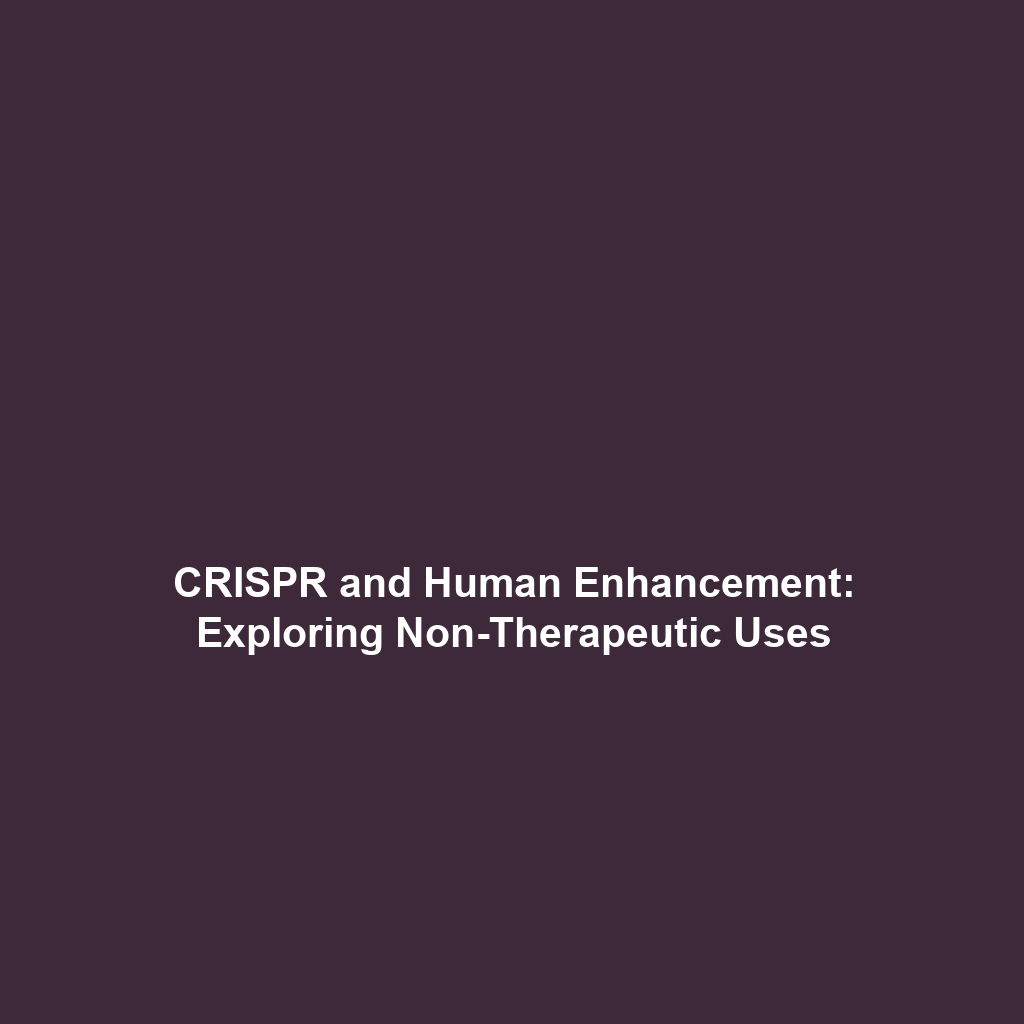How CRISPR Diagnostics are Being Used in Real-World Settings
Introduction
In recent years, the landscape of medical diagnostics has transformed dramatically, thanks in large part to CRISPR gene editing technology. One of the most significant applications of this innovative method is in diagnostics, particularly in the context of COVID-19 testing. CRISPR diagnostics leverage the precision of gene editing to deliver rapid and accurate results, changing the way diseases are detected and managed. Understanding how CRISPR diagnostics work in real-world settings is critical, as it showcases the potential of CRISPR technology beyond traditional gene editing applications.
Key Concepts
CRISPR diagnostics utilize the principles of CRISPR-Cas9 technology to identify specific genetic sequences associated with diseases. This method involves:
- Targeted detection of nucleic acids through guide RNA sequences.
- Amplicon generation for enhanced accuracy and sensitivity.
- Real-time results through fluorescence or colorimetric readouts.
The integration of CRISPR diagnostics into clinical practice exemplifies how CRISPR gene editing can extend beyond altering genetic material to providing rapid diagnostic solutions that have significant implications for public health.
Applications and Real-World Uses
The real-world applications of CRISPR diagnostics are numerous and impactful, particularly during the ongoing challenges posed by the COVID-19 pandemic. Here are some significant uses:
- COVID-19 Testing: CRISPR-based tests developed by various biotech firms enable quick and accurate identification of the SARS-CoV-2 virus.
- Detecting Other Viral Infections: Similar CRISPR methodologies are being employed to identify other viral pathogens, thereby expanding the scope of diagnostics.
- Genetic Disease Screening: CRISPR diagnostics can identify genetic mutations related to diseases like cystic fibrosis and sickle cell disease.
These applications demonstrate how CRISPR diagnostics are used in real-world settings to improve diagnostic efficiency and accuracy.
Current Challenges
Despite the promising capabilities of CRISPR diagnostics, there are several challenges that researchers and practitioners face:
- Regulatory Hurdles: Navigating the complex landscape of medical regulations can slow down the adoption of new technologies.
- Technical Limitations: Issues such as false positives or negatives can arise, necessitating further refinement of the detection methods.
- Public Awareness: There is a need for increased awareness and trust in CRISPR-based technologies among healthcare providers and patients.
Addressing these challenges of CRISPR diagnostics will be crucial for its widespread acceptance and application.
Future Research and Innovations
As CRISPR diagnostics continue to evolve, upcoming innovations promise to enhance their efficacy:
- Next-Generation Technologies: Advances in AI and machine learning are being combined with CRISPR diagnostics to improve accuracy and processing times.
- Expanded Target Detection: Research is underway to enable CRISPR systems to identify a broader range of pathogens and genetic disorders.
- Point-of-Care Testing: Future developments aim to simplify CRISPR diagnostics to allow for at-home testing and rapid on-site results.
These innovations hold the potential to significantly impact the future of CRISPR gene editing and diagnostics, paving the way for more personalized medical solutions.
Conclusion
In summary, CRISPR diagnostics are revolutionizing how we approach disease detection and management, with a notable impact on COVID-19 testing and beyond. As this field continues to grow, it is vital for researchers, healthcare providers, and the public to stay informed about advancements in CRISPR technology. To learn more about the implications of CRISPR diagnostics on future health strategies, consider checking out our articles on the future of CRISPR and CRISPR in medicine. Your understanding of these technologies can shape a better, healthier future.









